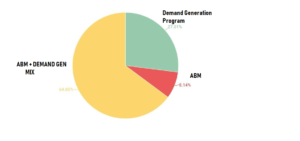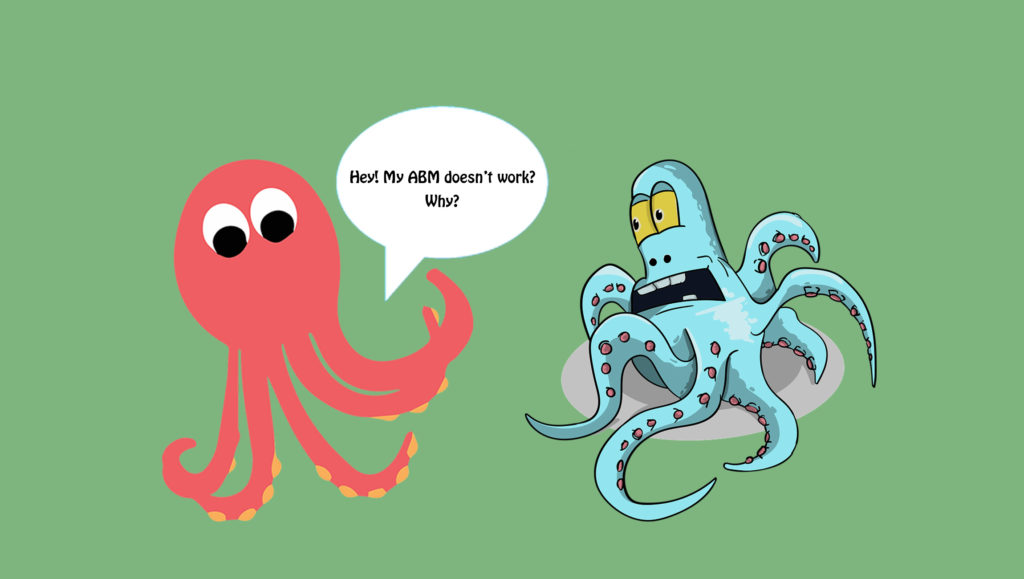Account-Based Marketing (ABM) has been in the Sales Technology horizon for some time now. The dynamic nature of Sales Technology tools and its adoption among ABM practitioners provide ample scope for both Marketing and Sales to identify, nurture, and engage customers throughout the lifecycle, building personalized interactions based on powerful analytics on complex sales challenges.
In this article, we tell you why to focus on powerful ABM strategy and leverage SalesTech to bring better collaboration and compelling sales proposition into the picture.
Increase Email Engagements; Build Re-Engagement Strategy with ABM
According to Demandbase, one of the biggest challenges for marketers is retaining their email subscribers and keeping them engaged with each subsequent campaign. Engagement and re-engagement campaigns using Marketing Automation with Account-Based Marketing strategies can play an important role in creating audience profiles based on intent data.
Part 1: 10 Sales Technology Options You Must Know In 2019
According to a report, emails with ABM have 37% higher open rates compared to non-ABM emails.
As per the results of a practical demonstration, Demandbase (using Salesforce Pardot) found out that ABM automation can help save time lost to manual segmentation and real-time intent data analytics.
One challenge most marketers face is keeping their email audience engaged over time — and the marketing team at Demandbase is no exception to the rule.
Majority of Marketers Use a Mix of ABM-Demand Generation Strategies
A balance of demand generation and ABM seems to be the ideal strategy for most marketing teams. According to Engagio’s recent report, 65% of companies rely on a mix of traditional demand gen and ABM programs to sell to their markets.

In the same report, Engagio stated that 40% of the Marketing team is involved in structuring their current goals to ABM, which includes Marketing-Sales alignment using automation and workplace technologies.
SalesTech Interview With Andrew Mahr, Chief Customer Officer at Triblio
Biggest Challenge to ABM: Inability to Execute!
Most marketing teams are unable to decide their ABM program strategy and design, missing out on aspects of content personalization, campaign optimization and sales education. In 2019, to drive any ABM campaign to success, sales education and enablement remain the biggest force. 70% of ABM-enabled teams find that defining and planning an ABM program is easier than executing them within a connected economy.
According to ITSMA, B2B companies are now employing three types of ABM: One-to-One, One-to-Few, and One-to-Many. Clearly, collaboration is the key between Marketing and Sales to see ROI on ABM programs.
Recommended: What is a Chatbot for Sales: Why Sales Technology is Incomplete without Chatbots?
Separating Intent Data from Persona
It’s funny how new users in ABM often confuse intent with person and purchasing behavior. Fully understanding the user intent is key to driving any ABM campaign successfully and establishing meaningful relationships. Buyer personas help take that intent data to the next level, based on how well the ABM practitioner understand the ideal customer profile. Information queries extracted from various marketing and search campaigns can further establish the true intent of the ideal customer profile. That’s where various components of Sales Technology come into the picture in putting ABM at play.
ABM is not a replacement: It’s a Supplement You Can Inject Anytime
Blasting one last misconception about ABM, it’s not hard to practice it. ABM does not replace old marketing initiatives but only adds a layer of intent-based account targeting and orchestration across multi-channel campaigns, including on programmatic and display ad segments.
From in-market initiatives to building email nurture campaigns, ABM is productive when it’s created with highly meaningful, personalized content dripped with regular interactions. In short, practicing ABM entails working with highly effective Sales and Marketing Technologies with powerful analytics loaded onto automation for better reporting and decision-making.




















